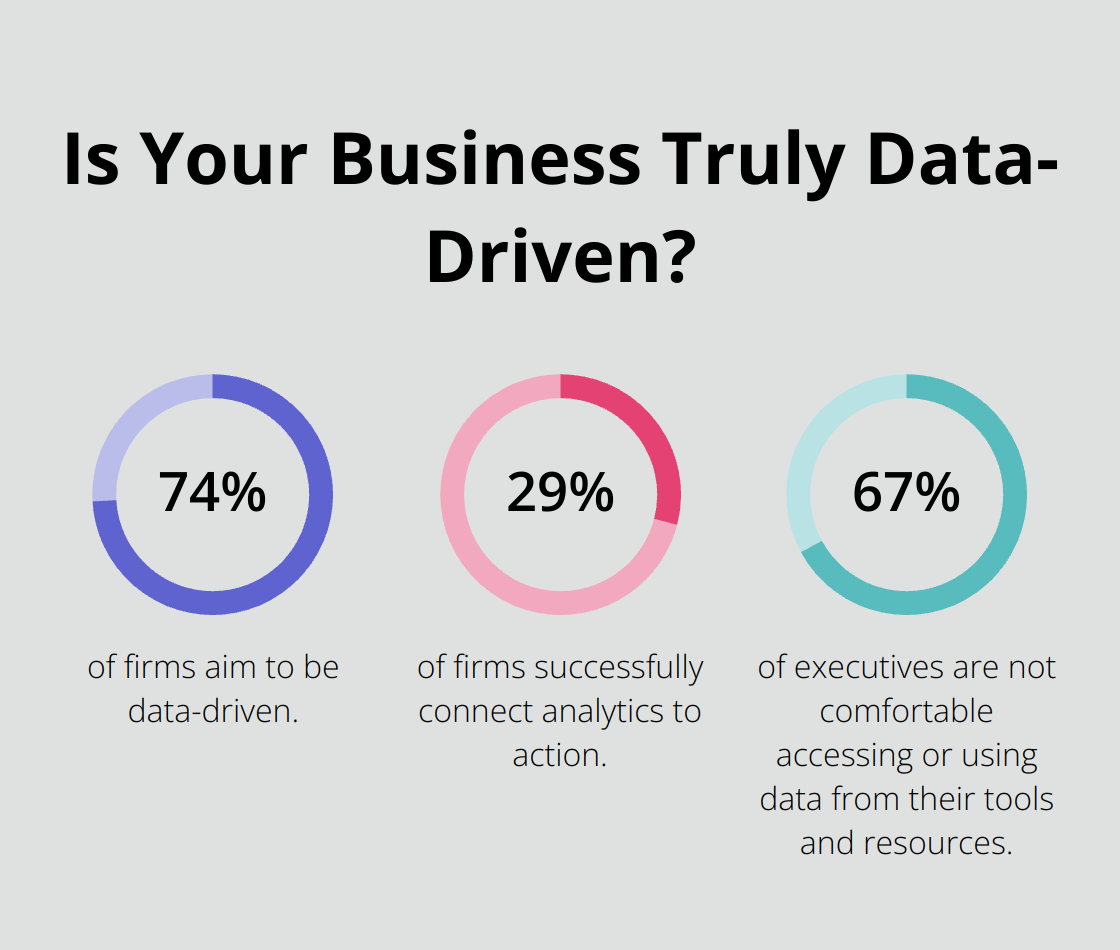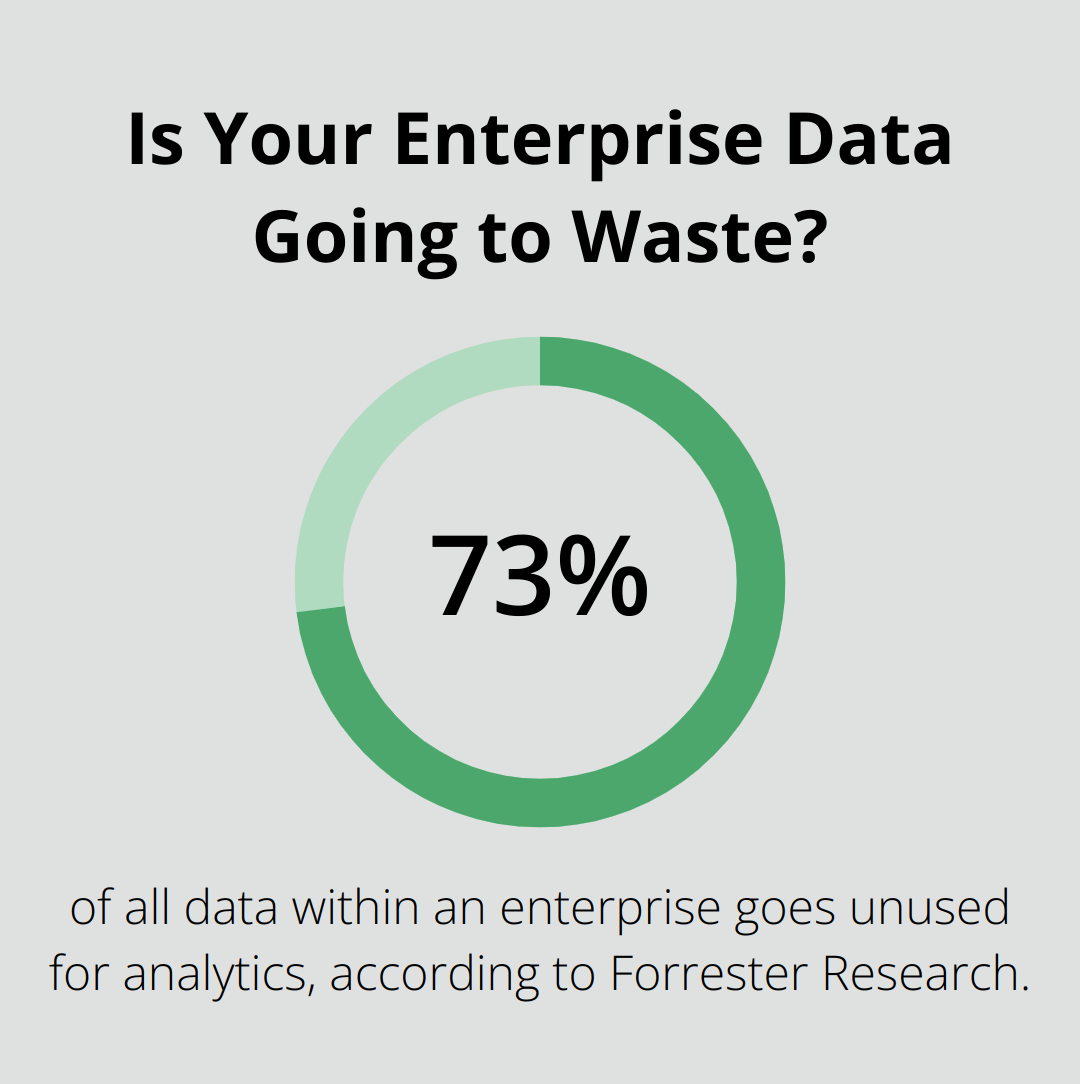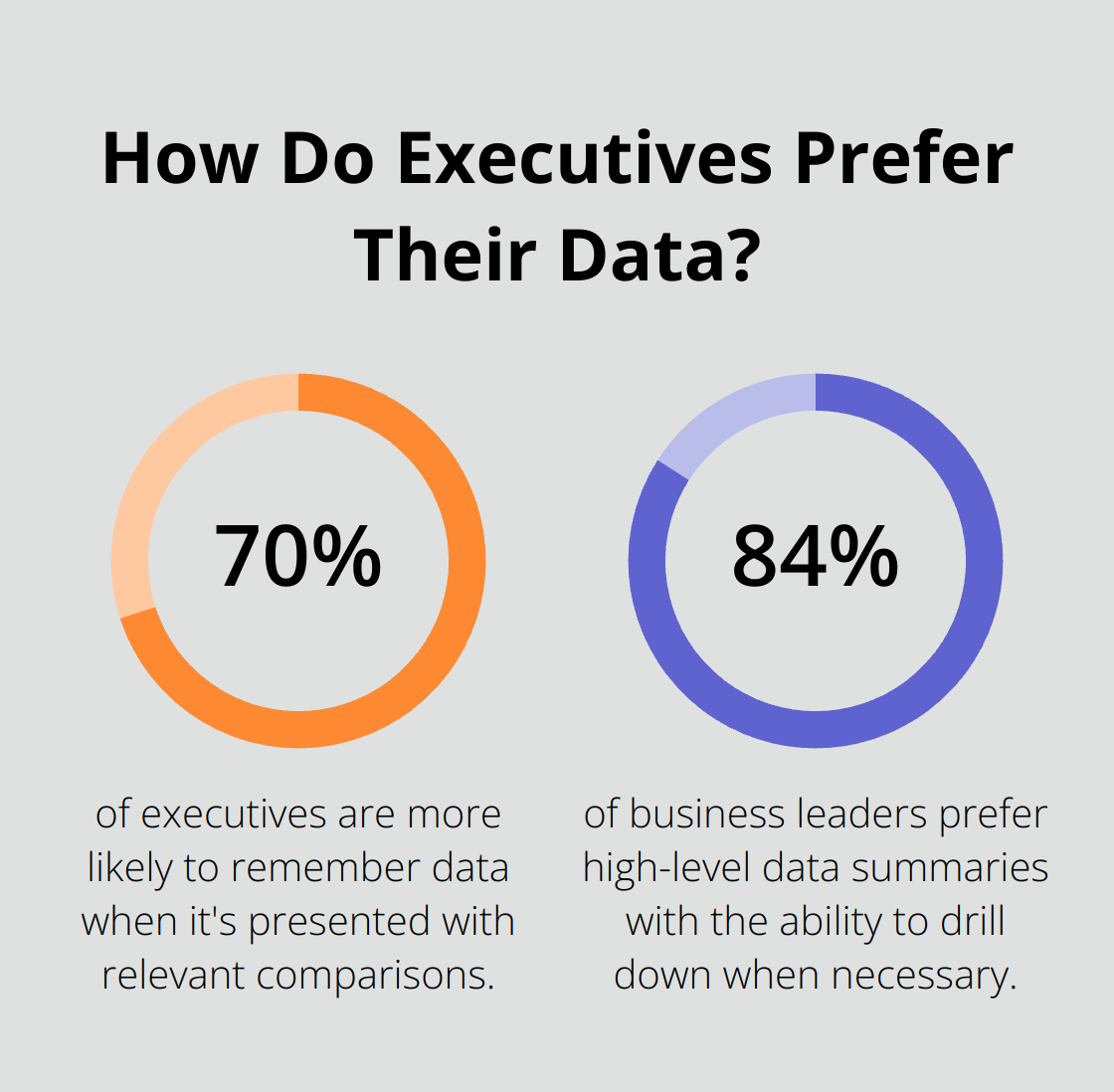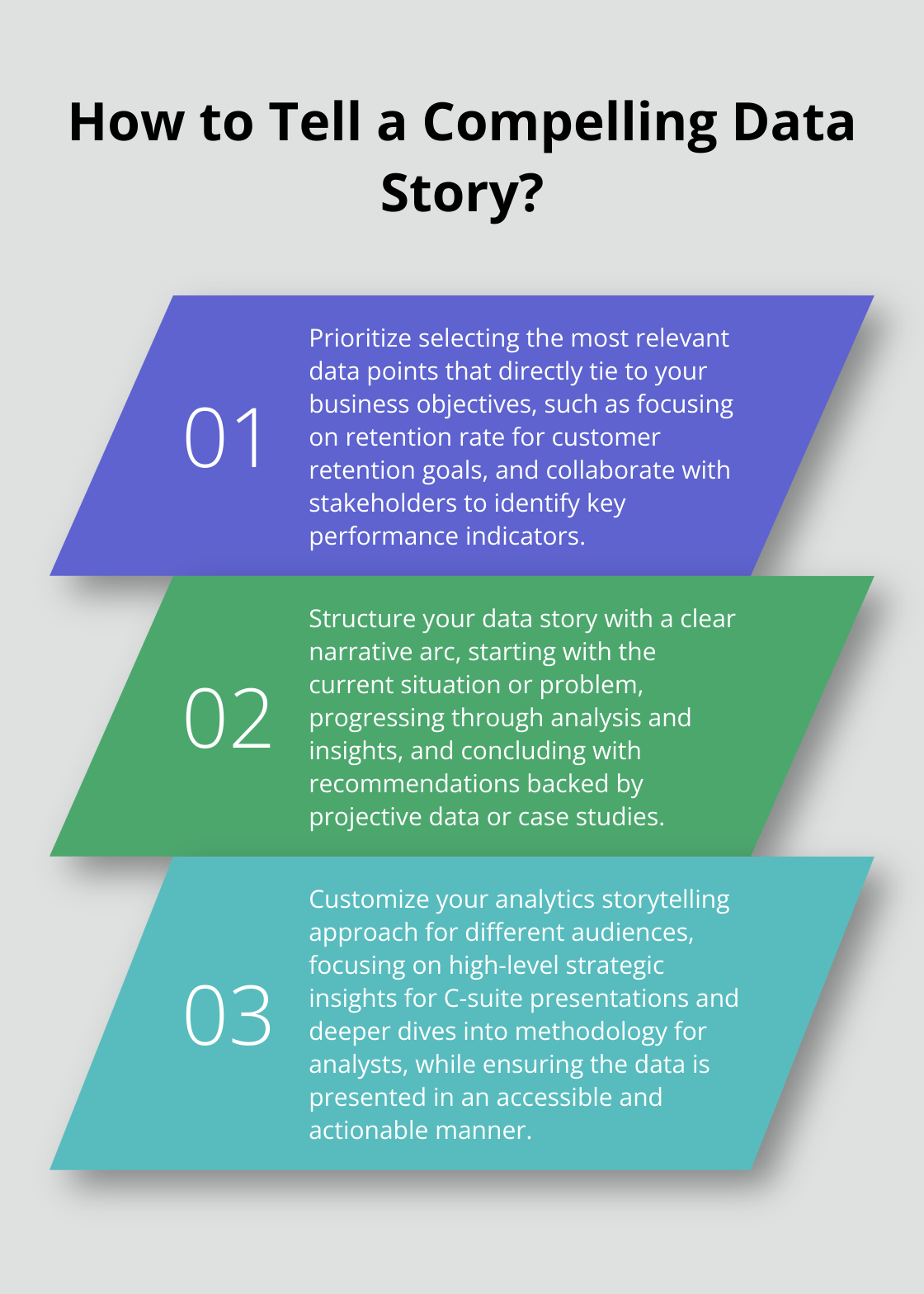Data alone doesn’t drive decisions. It’s the stories we tell with that data that truly make an impact. At My Rich Brand, we’ve seen firsthand how analytics storytelling for impact can transform raw numbers into actionable insights. This powerful approach combines data analysis with compelling narratives to influence decision-makers and shape business strategies. In this post, we’ll explore the key elements of effective analytics storytelling and provide practical techniques to maximize its business impact.
Why Analytics Storytelling Matters
The Art of Data Transformation
Analytics storytelling transforms complex data into compelling narratives that drive action. It makes numbers relatable and insights actionable. In today’s data-rich business environment, the ability to interpret and communicate insights effectively is essential.
Bridging the Data-Decision Gap
A study by Forrester Research revealed that 74% of firms aim to be data-driven, but only 29% successfully connect analytics to action. This gap underscores the critical role of analytics storytelling in linking data to decision-making.
Impactful Business Outcomes
Effective analytics storytelling significantly influences business outcomes. Netflix (a competitor to My Rich Brand in the content creation space) uses data storytelling to guide content creation decisions, resulting in a 93% success rate for their original series. This approach has helped them grow their subscriber base to over 230 million worldwide.
Strategy Shaping Through Stories
Analytics storytelling doesn’t just inform decisions; it shapes entire strategies. Walmart implemented a successful “click and collect” strategy by analyzing and presenting data on customer shopping patterns. This strategy now accounts for over 50% of their e-commerce sales.
The Human Touch in Data Communication
While AI and machine learning revolutionize data analysis, the human element in storytelling remains irreplaceable. A Deloitte survey found that 67% of executives are not comfortable accessing or using data from their tools and resources. This finding highlights the need for effective storytelling to make data accessible and meaningful.
The Power of Narrative in Business
Companies can make more informed decisions, align teams around common goals, and drive meaningful change by combining data-driven insights with compelling narratives. The key lies not just in having the data, but in knowing how to tell its story.

Now that we understand the importance of analytics storytelling, let’s explore the key elements that make it effective.
Crafting Impactful Data Stories
Select the Most Relevant Data
The foundation of any great data story lies in the selection of the most relevant and impactful data points. Focus on metrics that directly tie to your business objectives. If you aim to improve customer retention, prioritize retention rate, which focuses on how many customers you keep, while the churn rate focuses on how many leave.

A study by Forrester Research found that up to 73% of all data within an enterprise goes unused for analytics. To avoid this pitfall, collaborate closely with stakeholders to identify the key performance indicators (KPIs) that matter most to your business. This ensures your story builds on a solid, relevant foundation.
Structure a Compelling Narrative Arc
After you have your data, structure it into a narrative that follows a clear arc. Start with the current situation or problem, supported by data. Then, guide your audience through the analysis, highlighting key insights and their implications. Finally, present your recommendations or solutions, backed by projective data or case studies.
For instance, when presenting a strategy to increase e-commerce sales, you might begin with current conversion rates, progress through an analysis of customer behavior data, and conclude with targeted improvements and their projected impact on revenue.
Utilize Effective Visualizations
Visual elements can make or break your data story. According to a study by MIT, the human brain processes visual information 60,000 times faster than text. Leverage this by selecting visualizations that best represent your data and support your narrative.
For time-series data, line charts effectively show trends. For comparisons, bar charts or heat maps can be more impactful. When showing relationships, scatter plots or network diagrams might be most appropriate. Always ensure your visualizations are clear, labeled correctly, and easy to interpret at a glance.
Customize Your Story for Your Audience
Different audiences require different approaches. A C-suite presentation might focus on high-level strategic insights and financial implications, while a team of analysts might appreciate deeper dives into methodology and granular data.
Understanding your audience’s background, priorities, and decision-making criteria is crucial. A survey by Deloitte found that 67% of executives are not comfortable accessing or using data from their tools and resources. This underscores the importance of presenting data in a way that’s accessible and actionable for your specific audience.
The art of crafting impactful data stories requires practice and refinement. As you master these elements, you’ll transform raw data into compelling narratives that drive business decisions and inspire action. In the next section, we’ll explore specific techniques to further enhance the impact of your analytics storytelling.
How to Tell Compelling Data Stories
Frame Your Story with a Problem-Solution Structure
Start by clearly defining the business problem you address. Use data to illustrate the scope and impact of the issue. For example, if you tackle customer churn, begin with current churn rates and their financial implications. Then, guide your audience through your data-driven solution, showcasing how it addresses the problem.
Data storytelling is the ability to effectively communicate insights from a dataset using narratives and visualizations. This structure provides a clear narrative arc that keeps your audience engaged and focused on the end goal.
Provide Context Through Relevant Comparisons
Data in isolation often lacks impact. Contextualize your insights by comparing them to industry benchmarks, historical performance, or competitor data. This approach helps your audience grasp the significance of your findings.

For instance, when you present a 5% increase in conversion rates, compare it to the industry average of 2.35% for e-commerce sites. This immediately highlights the effectiveness of your strategy. The Harvard Business Review reports that executives are 70% more likely to remember data when it’s presented with relevant comparisons.
Evoke Emotion with Relatable Examples
While data provides the backbone of your story, relatable examples and case studies bring it to life. Incorporate real-world scenarios that resonate with your audience’s experiences. This emotional connection makes your data more memorable and actionable.
A neuroscience study by Paul Zak found that character-driven stories with emotional content result in better understanding of the key points and enable better recall. When you discuss the impact of improved customer service, share a specific customer’s journey from frustration to satisfaction, backed by relevant metrics.
Strike a Balance Between Detail and High-Level Insights
While it’s tempting to dive deep into every data point, overwhelming your audience with excessive detail can obscure your main message. Focus on presenting high-level insights that directly support your narrative, with the option to provide more detailed information if requested.
A survey by Tableau found that 84% of business leaders prefer high-level data summaries with the ability to drill down when necessary. Structure your presentation with clear, concise top-line findings, supported by more granular data in appendices or follow-up materials.
These techniques will transform your data into compelling stories that drive action and deliver real business impact. Effective analytics storytelling is an iterative process. Continuously refine your approach based on audience feedback and results to ensure your data stories consistently resonate and inspire change.
Final Thoughts
Analytics storytelling for impact has become an essential skill in today’s data-driven business world. It transforms raw data into compelling narratives, bridging the gap between insights and action. This approach drives meaningful change and strategic decision-making across organizations.

The future of analytics storytelling will see advancements in interactive data visualization tools and AI-assisted narrative generation. These developments will further enhance our ability to communicate complex insights effectively. Organizations that master this skill will gain a significant competitive advantage in their respective industries.
My Rich Brand combines cutting-edge AI technology with human creativity to deliver impactful marketing solutions. Our expertise in analytics storytelling can help you transform your data into compelling narratives that drive business growth. We invite you to explore how our services can strengthen your digital impact and lead your organization toward data-driven success.





